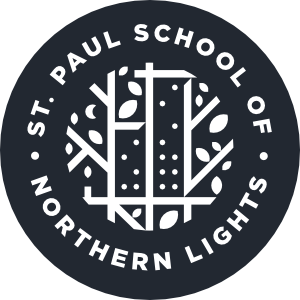State-mandated testing at Northern Lights
If you follow local news, you’ve likely seen a number of recent stories about charter schools, as some schools in our communities have closed their doors due to poor academic performance, financial mismanagement, or serious staffing challenges. School closures can be devastating for the communities they serve, but the possibility of closure is part of the contract charter schools enter into in exchange for the opportunity to develop and implement programs that are innovative, responsive to student and family needs, and operate with more autonomy than traditional large school districts.
Charter schools work with authorizers who serve to hold charter schools accountable for their charter contract goals and legal compliance. St. Paul School of Northern Lights is authorized by Innovative Quality Schools, with whom we have a very positive working relationship. At the end of our initial charter contract last year, SPSNL was offered a 5 year renewal contract, the longest available, following multiple years of surpassing our authorizer contract goals. Our new contract includes many goals that reflect our school mission, vision and values, along with some state-mandated goals around the Minnesota Comprehensive Assessments (MCAs), the state standardized tests in reading and math.
Families of students who were in 3rd-8th grade last year will be receiving MCA scores in the mail in the coming days, and while we view these tests as just one limited data point in the big, beautiful picture that is Northern Lights, I wanted to share some data in light of recent articles in the news and concern in the broader charter community around charter school performance on reading and math MCAs compared to their neighborhood district schools.
Our primary students (K-6th) increased in their collective “proficiency,” or mastery of state standards, in math last year, continuing to score higher than students in St. Paul Public Schools. Our secondary students (7th & 8th) decreased in their collective proficiency in math, falling below the proficiency level of St. Paul Public Schools. Both primary and secondary students decreased in their collective proficiency in reading, though both groups continue to score higher than students in St. Paul Public Schools and, at the secondary level, higher than the state average.
There are many factors and nuances to consider when looking at standardized test data, and it’s important to remember that no schools are measuring identical groups of students. The state doesn’t publish reports on student groups under a certain size, so we can’t compare, for example, the success of English Language Learners at Northern Lights compared to English Language Learners across the state. Northern Lights does serve a significant number of students with Special Rights (over 30%), so we do have sufficient data in this area.
Based on the MCAs, students with IEPs at Northern Lights had proficiency rates twice as high as students with IEPs at St. Paul Public Schools, and exceeded the state average for students with IEPs in both reading and math.
Students without IEPs also had proficiency rates higher than students without IEPs at St. Paul Public Schools in both reading and math, and had comparable proficiency to the state average in reading, though were lower than the state average in math.
To be clear, while these types of measures and comparisons might be part of our continued authorization as a charter school, outperforming other schools isn’t our goal–our goal is to foster kind, curious, critical thinkers who advocate for meaningful change in their diverse communities. We believe students need foundational literacy and numeracy skills in addition to our relationship-based learning process to reach this goal, and our teaching teams are continuously engaged in finding ways to meet the needs of all of our students in joyful community.
Rachel Ngendakuriyo
School Leader
